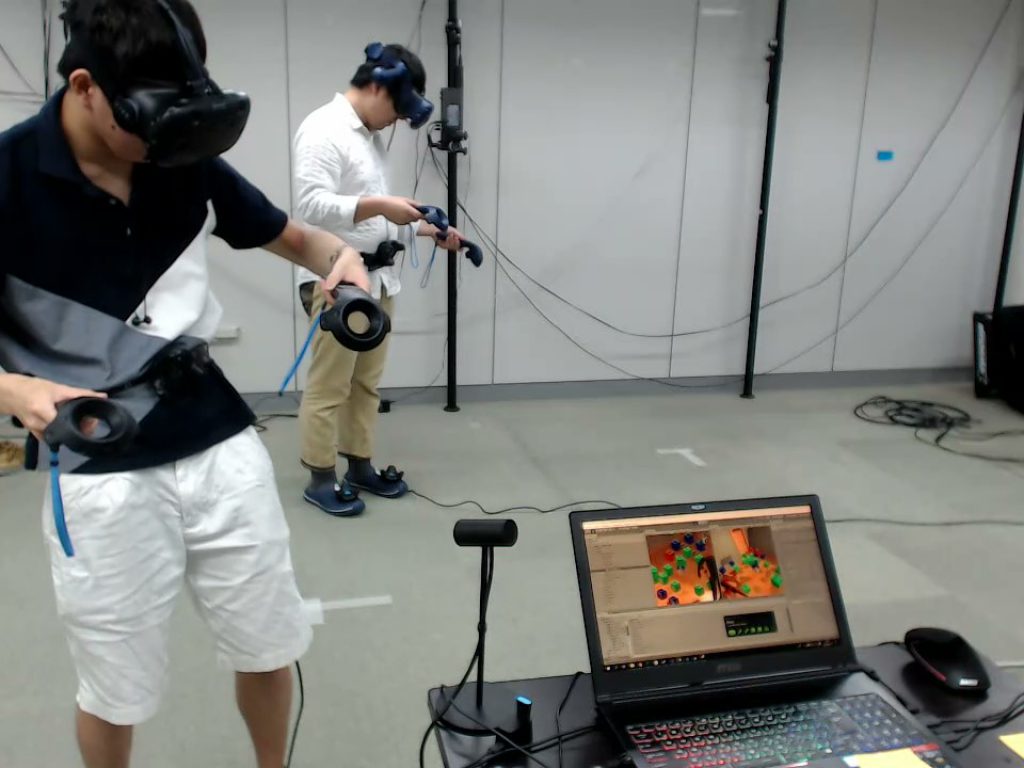Exploring Perspective Dependency in a Shared Body with Virtual Supernumerary Robotic Arms
![unnamed Unity 2018.3.11f1 Personal - [PREVIEW PACKAGES IN USE] - Scene6.unity - Parasite - PC, Mac & Linux Standalone](https://im-lab.net/wp-content/uploads/elementor/thumbs/unnamed-og2h2s0rlhpguzas3ay3yqujf2bc55arvg605ly03k.jpg)
![SharedTask Unity 2018.3.11f1 Personal - [PREVIEW PACKAGES IN USE] - Scene6.unity - Parasite - PC, Mac & Linux Standalone](https://im-lab.net/wp-content/uploads/elementor/thumbs/SharedTask-og2h04588e27yr61n5i5wf1itrfwc0q5i9mh7dw5q8.jpg)

Abstract
With advancements in robotics, systems featuring wearable robotic arms teleoperated by a third party are appearing. An important aspect of these systems is the visual feedback provided to the third party operator.
This can be achieved by placing a wearable camera on the robotic arm’s “host”, but such a setup makes the visual feedback dependent on the movements of the main body.
In this project, we reproduced this view dependency in VR using a shared body. The “host” shares their virtual body with the virtual Supernumerary Robotic Arms of the teleoperator.
In our research, the two users perform two tasks: (i) a “synchronization task” to improve their joint action performance and (ii) a “building task” where they worked together to build a tower.
In a user study, we evaluated the embodiment, workload, and performance of the teleoperator through the “building task” with three different view dependency modes. We present some early outcomes as trends that might give directions for the future investigations.
ロボット工学の進歩により、第三者が遠隔操作するウェアラブルロボットアームを備えたシステムが登場しています。これらのシステムにおいて,第三者に提供される視覚的なフィードバックが重要なものとなっています。
これは、ロボットアームのホストにウェアラブルカメラを配置することで実現できますが、このような構成では、視覚的なフィードバックが本体の動きに依存します。
本研究では、共有身体を使用してVRでこの視点の依存関係を再現しました。 ホストは、バーチャルの身体を遠隔操作者の操作するロボットアームと共有します。
私たちの調査では、2人のユーザーが次の2つのタスクを実行します:(i)共同作業のパフォーマンスを向上するための「同期タスク」と(ii)一緒にタワーを構築する「構築タスク」
ユーザー調査では、3つの異なる視点モードを用いた「構築タスク」を通じて、遠隔操作者の身体性、作業負荷、およびパフォーマンスを評価しました。いくつかの初期の結果を、今後の調査の方向性を示す傾向として提示します。
Members
Ryo Takizawa,
Adrien Verhulst,
Katie Seaborn,
Masaaki Fukuoka,
Atsushi Hiyama,
Michiteru Kitazaki,
Masahiko Inami,
Maki Sugimoto
